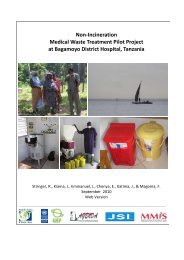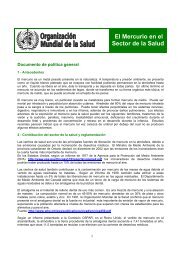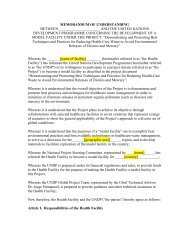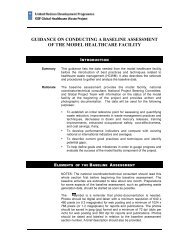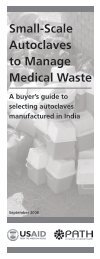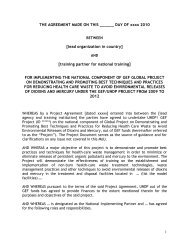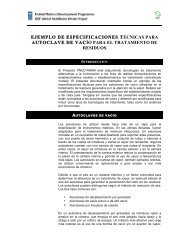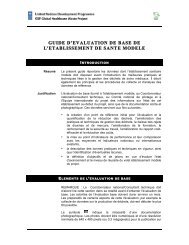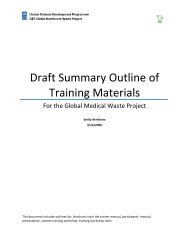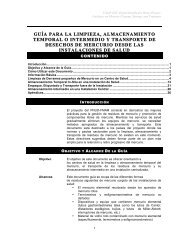Latvia
Latvia
Latvia
You also want an ePaper? Increase the reach of your titles
YUMPU automatically turns print PDFs into web optimized ePapers that Google loves.
Health systems in transition<br />
<strong>Latvia</strong><br />
and vaccinations, and onco-cytological consultations (cervical smears) for<br />
women aged 18–65. The general conclusion has been that approximately 80%<br />
of PHC physicians have been evaluated as “good” and received their bonuses<br />
(SCHIA 2005).<br />
A survey conducted in 2001 on patient satisfaction with their GPs by the<br />
North-East Sickness Fund (no longer in existence at the time of writing)<br />
found that patients were largely satisfied with the work of their personal GPs,<br />
but were not satisfied with the referral system, patient fees and the system of<br />
pharmaceutical reimbursement. In some cases concerns were expressed over<br />
the following issues: the educational level of GPs; lack of confidence in the<br />
GP’s ability; communication with the GP; management of GP practices; no real<br />
choice of GP in rural areas; and the GP as a source of information on health care.<br />
More issues of concern in primary care are discussed later in this section.<br />
Changes in the primary care system over recent years<br />
The development of PHC in <strong>Latvia</strong> has been strongly influenced by a number<br />
of reforms that have taken place in recent years. A short history of PHC<br />
development includes the following main points.<br />
From the beginning of the reforms, the Government favoured the<br />
establishment of private practices as a setting for primary care delivery.<br />
According to the “Strategy for Health Care Development” prepared by the<br />
Ministry of Welfare and accepted by the Government in 1996, “… primary<br />
health care should be based on private medical practice, establishing a primary<br />
health care development foundation and engaging various financial resources.”<br />
The Primary Care Support Fund, PHARE and the World Bank equipped GP<br />
practices through various projects from 1998–2002.<br />
In 1998, as part of the transition to a PHC system, the sickness funds (that<br />
were in existence at the time), in cooperation with local governments, developed<br />
PHC plans on the basis of the existing structure of administrative regions<br />
and the requirement of at least one family doctor per 2000 people. The list of<br />
PHC physicians in 1999 consisted of 1362 doctors in three specialties: GPs<br />
(44%), internists (31%), and paediatricians (25%). In 2004 these percentages<br />
had changed in favour of GPs, as noted earlier, and were 80%, 14% and 6%<br />
for each of these specialties, respectively. The number of certified GPs has<br />
increased sharply in recent years due to retraining courses for GPs (supported<br />
by the Primary Care Support Fund and the World Bank in 2001–2003), and<br />
doctors who graduate as GPs from the <strong>Latvia</strong>n Medical Academy becoming<br />
involved in PHC.<br />
180





